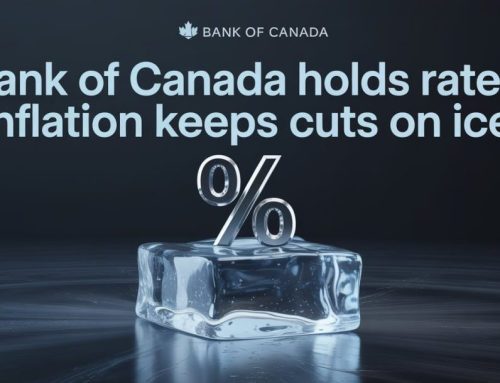If your goal is to pay your mortgage off as quickly as possible, you may be inclined to request a shorter amortization. After all, you’ll become mortgage-free faster by choosing a 25 year amortization instead a 30 year, right?
Not necessarily.
In fact, if you’re planning on paying your mortgage off as fast as possible, then your initial amortization is irrelevant providing that you have two things in place:
- Flexible prepayment privileges
- Discipline
Flexible Prepayment Privileges
Most mortgage lenders allow you to prepay a specified amount towards your mortgage each year, over and above your scheduled payments. This is referred to as your prepayment privileges, which are generally written as 100/15 or 20/20, for example. The first number is the percentage in which you are allowed to increase your scheduled payments. The second applies to your lump sum payments.
In other words, a mortgage with 20/20 prepayment privileges will allow you to increase your payments by up to 20%, as well as sum payments of up to 20% of the original mortgage balance per year. Most lenders will allow you to use a combination of both, providing that they don’t exceed 20% of the original balance in total.
As soon as you make an additional payment, whether you’re increasing your scheduled payment amount or making a lump sum payment, your effective amortization will immediately drop. I’ll discuss this in detail in the next section of this blog.
There are two things that you need to watch out for when reviewing your lender’s prepayment privileges:
- Lower maximum prepayment limits
- Lump sum payment flexibility
Lower maximum prepayment limits
With some mortgage products, prepayment privileges can be quite limited, such as 5/5 or 10/10, so you may want to avoid these products if your plan is to aggressively pay down your mortgage. However, even lower prepayment limits may still allow you to meet your prepayment goals. Every situation can be a bit different, and it comes down to how aggressive you plan on getting.
Lump sum prepayment flexibility
Another thing you’ll want to avoid is lenders who limit you to a single lump sum payment per year. For example, let’s say your lender will allow a total lump sum payment of $100,000. But as soon as you make a prepayment, then you would not be able to make another one until the following year. This can be based on the calendar year, or the mortgage anniversary year, depending on the lender. The amount of the prepayment is irrelevant in this case. It could be $20,000, $8,000 or even $1,000. If you’re limited to one time per year, then this will be considered your one time use and the amount remaining will not be carried over to the following year.
Fortunately, most lenders will not limit the number of lump sum payments, providing they are made on a scheduled payment date. Make sure you inform your broker or bank mortgage specialist of your goal so they can ensure you’re placed with a mortgage product that gives you maximum prepayment flexibility.
With flexible 20/20 prepayment privileges, you could pay your entire mortgage off in as little as 4 years (on paper), regardless of how high your original amortization may be. You could go with a 100 year amortization (if such a thing existed) and still pay the mortgage off in less than four years. From that standpoint, your initial amortization is irrelevant.
Discipline
As the utilization of prepayment privileges cannot be set up prior to the start of your new mortgage, you’ll need to have some discipline if you want to implement a prepayment strategy.
Regardless of whether you choose to increase your payment, or make multiple lump sum payments, you’ll need to act after closing. Some people don’t want to think about their mortgage again until the end of the term. You know yourself better than anyone. If you are committed to paying your mortgage off faster and are prepared to use your prepayment privileges, then a longer amortization is often the right strategy. But if you’re more on the lazy side, and don’t trust yourself to take the necessary steps after closing, then you may want to consider going with the shorter amortization from the beginning.
Benefits to a Longer Amortization
The reason why I’ll generally recommend a longer amortization is because it can give you additional flexibility. If you found yourself in a position where you needed to lower your monthly payments, you could always revert to the lower payment at any time during the term.
It’s like free insurance!
When you start with a shorter amortization, you’re eliminating your flexibility to reduce your payment in the middle of your term. Things happen in life. Loss of employment, financial crisis, etc. You never know when life is going to throw you a curveball.
Better to have the option to reduce your payment, just in case. It’s a nice safety net which would not get in the way of your mortgage payoff goals.
If you maintain the original payment schedule from the 30 year amortization, then yes, it will take 30 years to pay off your mortgage. But as soon as you start using your prepayment privileges, then this number would be substantially reduced.
For example, if you were to start with a 30 year amortization and set your payments to match that of a 20 year, then this is no different than having a 20 year amortization. That is, providing that you start it from the first payment, and maintain it through the entire term. 100% equal.
You’re using the exact same payment, which would have the exact same is principal / Interest split, which gives you the exact same payoff date. The only difference is that initial mortgage approval documents had an amortization of 30 years vs. 20. From this standpoint, who cares about the number on the paperwork if you’re mortgage free after 20 years?
The benefit?
It allows you to revert to the lower payment at any time during the term. This can come in handy if want to qualify to purchase an investment property, or if you want to increase your monthly cash flow for any reason.
Conclusion
Amortization can simply be defined as the amount of time it takes to pay your mortgage down to zero assuming equal payments. The original amortization is only meaningful for two reasons:
- To set your minimum scheduled mortgage payment
- To maximize your mortgage preapproval limit
Anytime you make an additional payment towards your mortgage, you’re immediately reducing your effective amortization, and therefore one step closer to becoming mortgage free.
A mortgage with flexible 20% lump sum prepayment privileges can give you the power to become mortgage free in less than four years… regardless of the amortization period you started with. While few have the means to be quite this aggressive, it’s still possible with some lenders.
As long as you have the discipline to make the additional payments, then choosing a longer amortization is an easy way to increase your mortgage payment flexibility.
I would also recommend reading the following of my related blogs:
Everything You Need To Know About Mortgage Prepayment Privileges
The Benefits of 30 Year Amortization








Leave A Comment